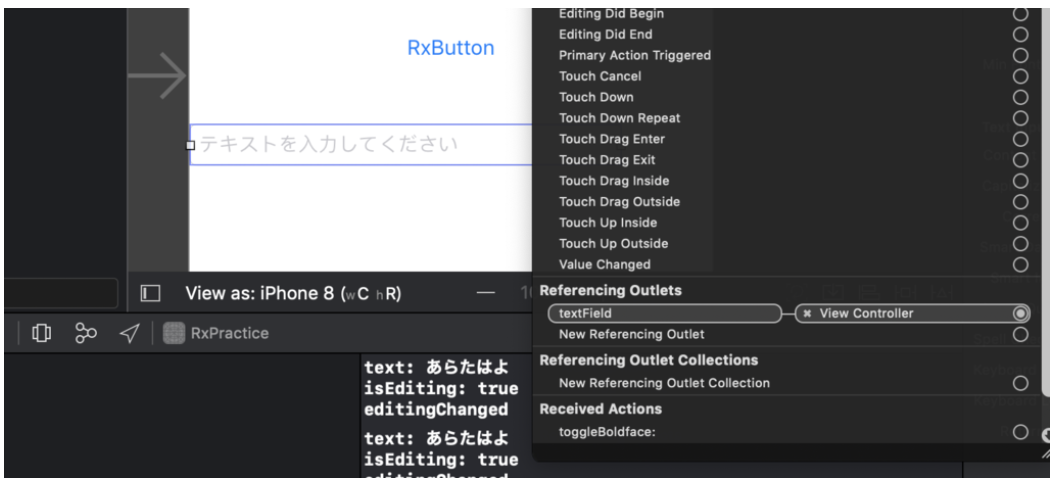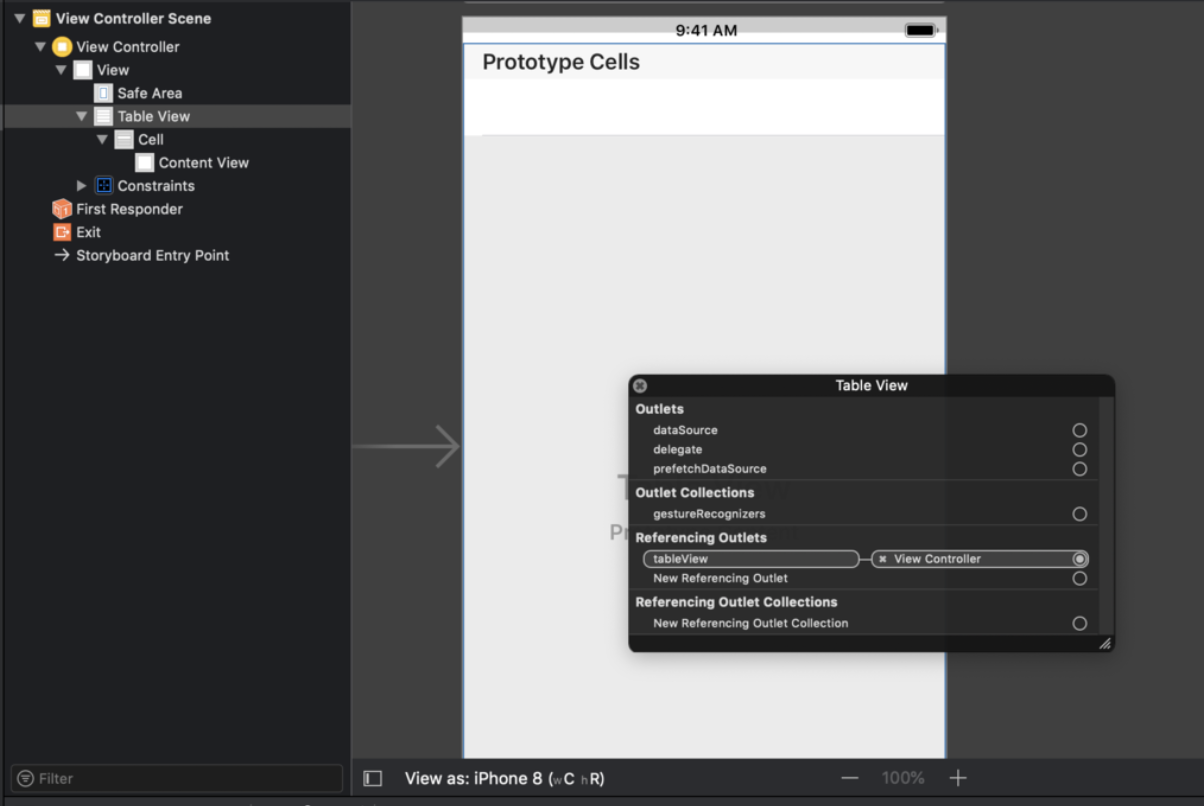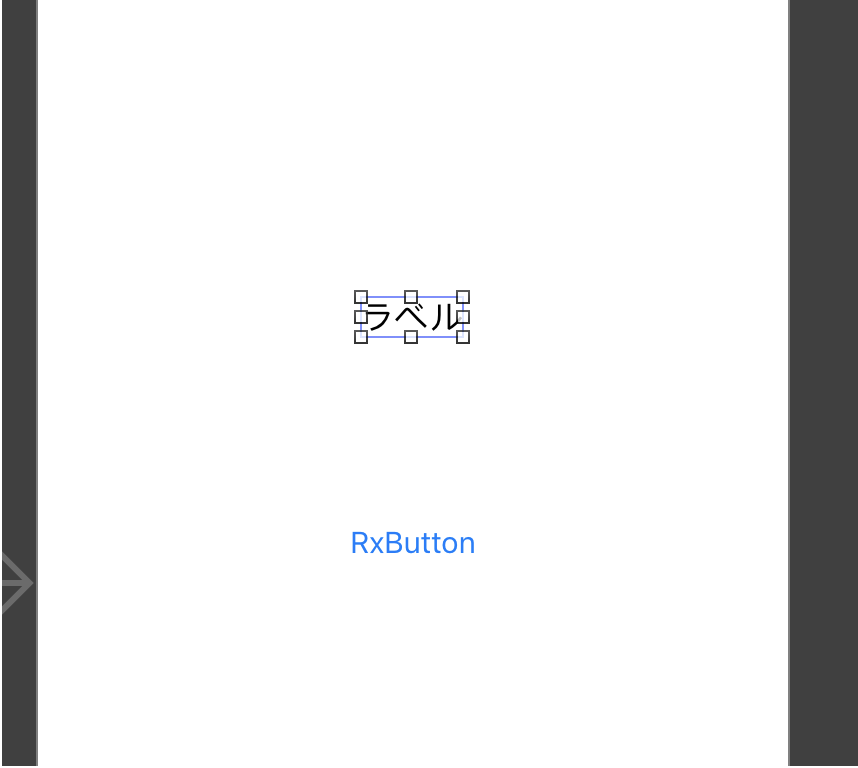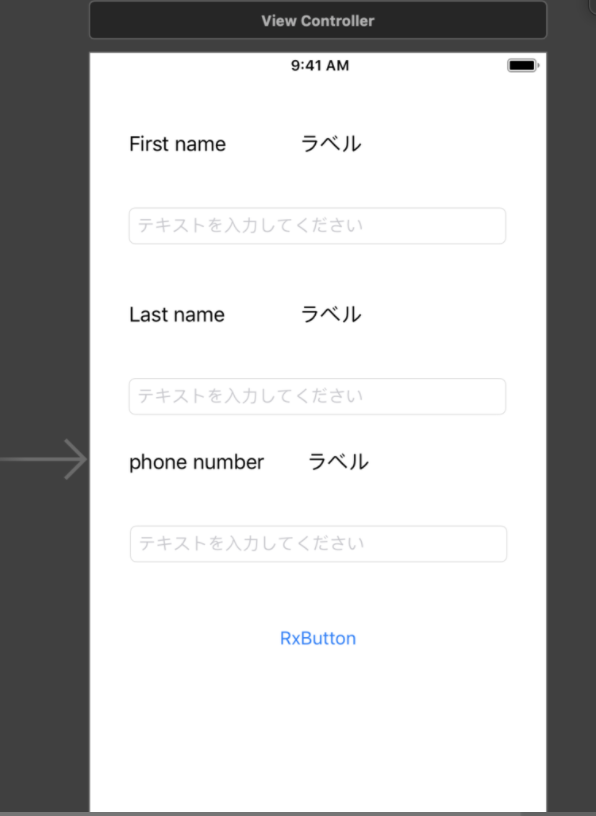RxSwift+NotificationCenterの購読機能を使ってキーボードが被らない機能を実装する
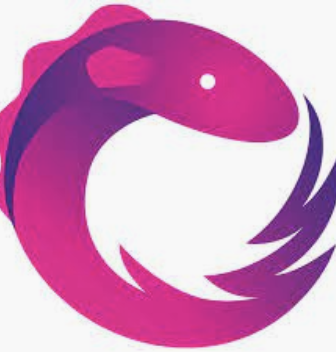
概要
今回はNotificationCenterのRxSwiftについて解説していきます。
このページをみるとNotificationCenterにはnotificationのfunctionがあることがわかります。
ということは
NotificationCenter.default.rx.notification("", object: nil)という書き方になります。こちらはnotificationの引数を省略した形になります。
わざわざなんでNotificationをRxSwiftぽく書くんだ!という意見はあると思いますが後で説明します。
NotificationCenterの基本形
では、まずはNotificationCenterの購読の基本形を書きます。
ViewController.swift
NotificationCenter.default.rx.notification(name, object: nil)
.subscribe(onNext: { notification in
// 処理内容
})
.disposed(by: disposeBag)このようになります。
これはRxSwiftを使わないやり方だと
ViewController.swift
override func viewWillAppear(_ animated: Bool) {
super.viewWillAppear(animated)
// 購読の登録
NotificationCenter.default.addObserver(self, selector: Selector(("sample:")), name: NSNotification.Name(rawValue: "SampleNotification"), object: nil)
}
override func viewWillDisappear(_ animated: Bool) {
super.viewWillDisappear(animated)
// 購読の解除
NotificationCenter.default.removeObserver(self, name: NSNotification.Name(rawValue: "SampleNotification"), object: nil)
}
@objc private func sample(notification: Notification) {
// 処理内容
}と同じ実装になります。
これだとRxSwiftを使った方が購読の解除のコードが要らない分、簡単に書けますね。
今回実装する機能について
今回はラインだったりメッセンジャーアプリに付き物のキーボードを表示したときにLabelやTextFieldが被らないようにする実装について見ていきます。
RxSwiftを使わなくてもできるやん!というツッコミは勘弁してください。
よく使う機能をRxSwift で書くとどうなるかを学ぶ方がコードの書き方が分かると思います。
cocoapodについて
念の為、podの環境についておさらいします。
cocoapod
# Uncomment the next line to define a global platform for your project
# platform :ios, '9.0'
target 'RxSwitch' do
# Comment the next line if you're not using Swift and don't want to use dynamic frameworks
use_frameworks!
# Pods for RxSwitch
pod 'RxSwift', '~> 4.0' # 追加する
pod 'RxCocoa', '~> 4.0' # 追加する
target 'RxSwitchTests' do
inherit! :search_paths
# Pods for testing
end
target 'RxSwitchUITests' do
inherit! :search_paths
# Pods for testing
end
endこのように
- RxSwift
- RxCocoa
のみインストールします。
storyboardの構成について
では今度はstoryboardの構成について見ていきます。
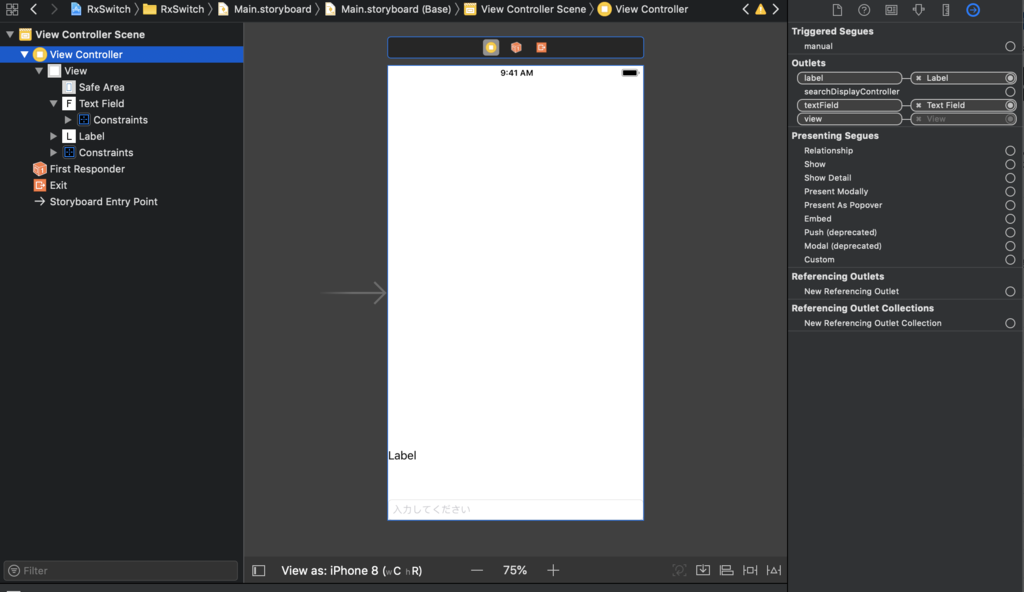
notification_rx_1
ViewControllerにはUILabelとUITextFieldのみを置きます。
UILabelは@IBOutletの接続をしておきます。
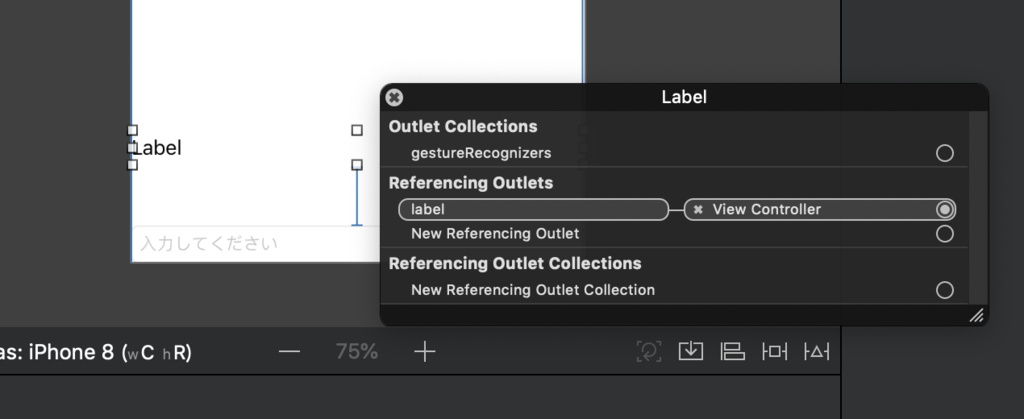
notification_rx_2
UITextFieldも同様です。
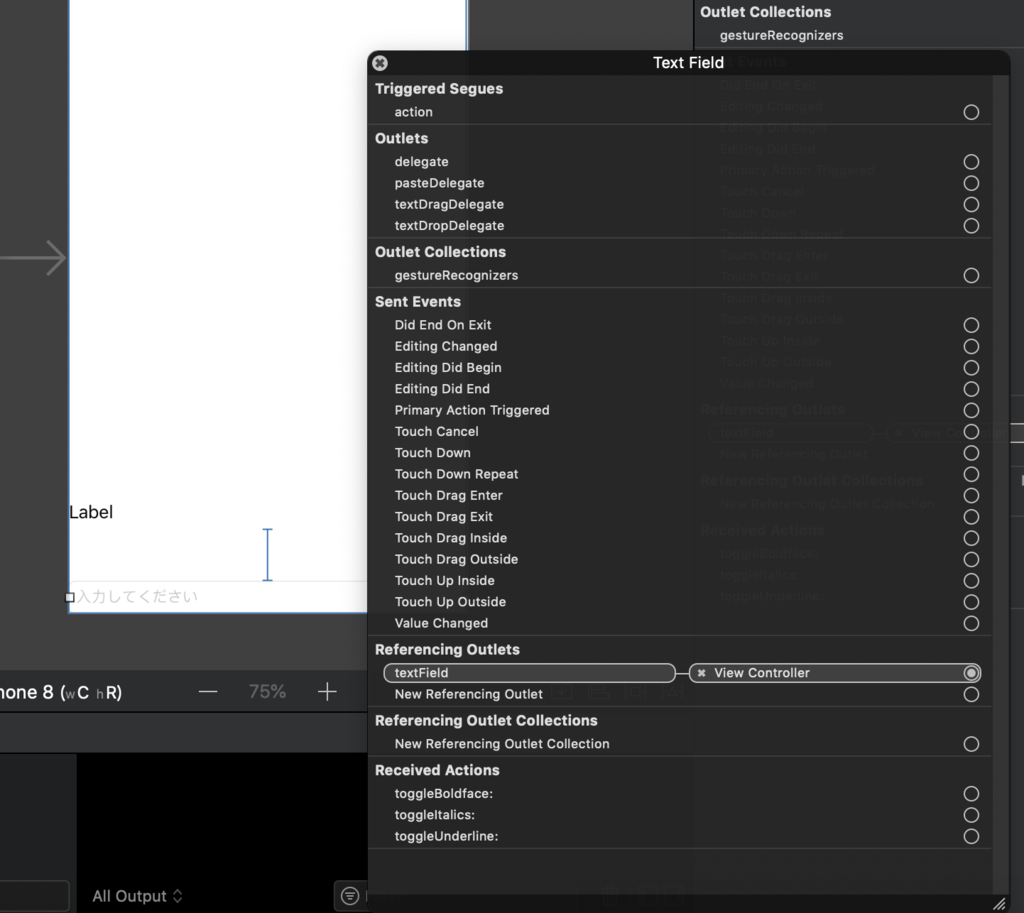
notification_rx_3
今回はキーボードとの関係性の実装でUITextFieldの制約が重要になりますのでこちらの設定だけ確認しておきます。
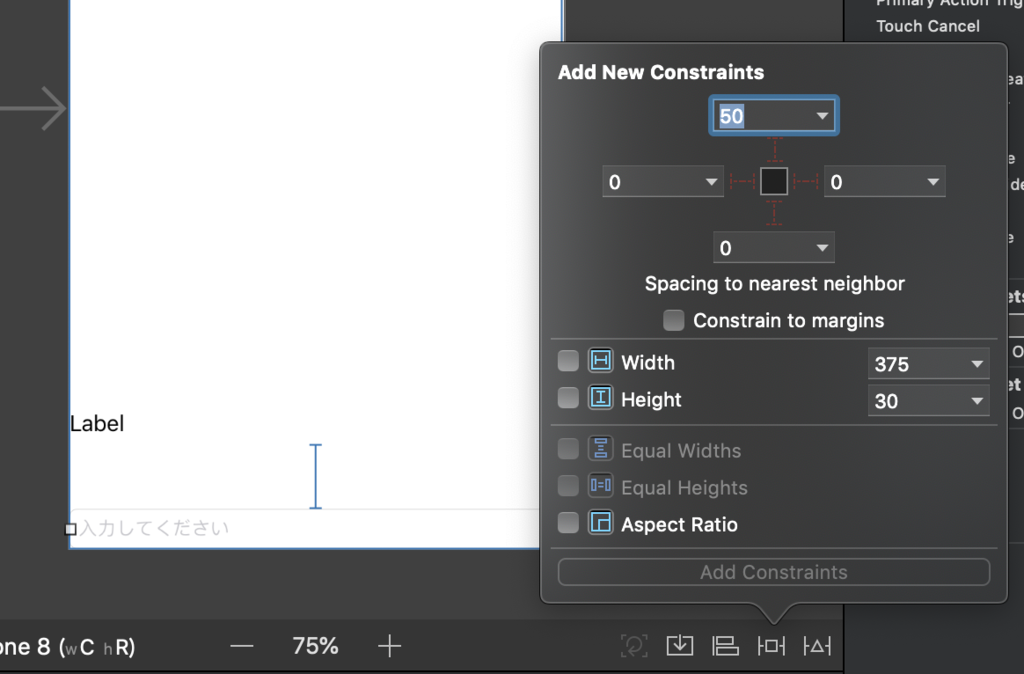
notification_rx_4
これで準備が完了します。
ソースコードについて
今回はキーボードの対応ということもありますので少しコードが多くなります。
本当はもっと簡単な機能が具体例にいいのですが、今時のiOS開発でNotificationが必要になる箇所はプッシュ通知だったりキーボード対応だったりします。
ですので今回でまとめて解説します。
ViewController.swift
import UIKit
import RxCocoa
import RxSwift
class ViewController: UIViewController {
@IBOutlet weak var label: UILabel!
@IBOutlet weak var textField: UITextField!
private let disposeBag = DisposeBag()
override func viewDidLoad() {
super.viewDidLoad()
// UITextField とUILabelのtextのデータを紐づける
textField.rx.text
.bind(to: label.rx.text)
.disposed(by: disposeBag)
// キーボードが表示される時のNotificationを登録する
NotificationCenter.default.rx.notification(UIResponder.keyboardWillShowNotification, object: nil)
.subscribe({ notification in
if let element = notification.element {
self.keyboardWillShow(element)
}
})
.disposed(by: disposeBag)
// キーボードが消える時のNotificationを登録する
NotificationCenter.default.rx.notification(UIResponder.keyboardWillHideNotification, object: nil)
.subscribe({ notification in
if let element = notification.element {
self.keyboardWillHide(element)
}
})
.disposed(by: disposeBag)
}
/// キーボードが表示時に画面をずらす。
private func keyboardWillShow(_ notification: Notification) {
guard let rect = (notification.userInfo?[UIResponder.keyboardFrameBeginUserInfoKey] as? NSValue)?.cgRectValue,
let duration = notification.userInfo?[UIResponder.keyboardAnimationDurationUserInfoKey] as? TimeInterval else { return }
UIView.animate(withDuration: duration) {
let transform = CGAffineTransform(translationX: 0, y: -(rect.size.height))
self.view.transform = transform
}
print("keyboardWillShowを実行")
}
/// キーボードが降りたら画面を戻す
private func keyboardWillHide(_ notification: Notification) {
guard let duration = notification.userInfo?[UIResponder.keyboardAnimationCurveUserInfoKey] as? TimeInterval else { return }
UIView.animate(withDuration: duration) {
self.view.transform = CGAffineTransform.identity
}
print("keyboardWillHideを実行")
}
}このようになります。
これで実機でビルドしてみてUITextFieldをタップしてみましょう。
無事にキーボードが表示されてUITextFieldが被らないことが確認できたら成功です。

